Dual Diagnosis Treatment Centers in Ohio
A substance use disorder paired with one or more mental illnesses can make it difficult to maintain a healthy life. However, you can start recovery with the right support and resources. However, recovery doesn’t happen overnight. But the steps you will take to overcome your addiction and mental health issues can be empowering. And you don’t have to do it alone. The Woods at Parkside is one of the best accredited dual diagnosis treatment centers in Ohio.
What Is Dual Diagnosis Treatment?

So, what is dual diagnosis? Simply put, dual diagnosis, or co-occurrence, refers to the presence of a substance use disorder and a mental health disorder in the same person. It’s common for addiction and mental health issues to go hand-in-hand. In fact, an estimated 9.2 million adults in the United States have co-occurring disorders. And many of these individuals require specialized mental health care for the long-term management of these disorders.
Dual diagnosis treatment programs help adults struggling with almost any type of mental health disorder that occur alongside substance use disorders. Common disorders include:
- Anxiety disorders
- Depression
- Bipolar disorder
- Borderline Personality disorder (BPD)
- Attention deficit hyperactivity disorder (ADHD)
- Schizophrenia
- Eating disorders
Furthermore, if you’re struggling with your mental health but don’t have a diagnosis, accredited dual diagnosis treatment centers in Ohio can help you receive a diagnosis. Although familiarizing yourself with symptoms of the disorders listed above can help you identify some of your experiences, it’s recommended you receive a diagnosis from a licensed mental health professional. They can help you find the answers you’re looking for as you begin recovery.
Is It Right for You?
Mental health disorders don’t always precede substance use disorders, but either issue, left untreated, can lead to the other. For example, regular heavy drinking can cause symptoms of depression and anxiety. On the other hand, some individuals with an eating disorder use alcohol as a coping mechanism for their symptoms.
No matter which came first, untreated mental illness and substance abuse can lead to additional health problems. The symptoms of addiction and mental illnesses not only worsen one another, but they also often overlap, making it difficult to tell which symptoms are caused by which disorder. As a result, treatment for co-occurring disorders is necessary to address the complex relationship between addiction and mental health.
Dual diagnosis treatment centers in Ohio, like The Woods at Parkside, treat adults using evidence-based methods. From group therapy to stress management techniques, patients learn how to cope with their drug and alcohol addiction alongside symptoms of their mental health disorder.
Why Enroll in Our Dual Diagnosis Treatment Program?
Deciding it’s time to get help can be one of the most challenging yet empowering steps in your recovery. But how do you decide which dual diagnosis treatment center is right for you? Accredited dual diagnosis treatment centers in Ohio are patient-focused, meaning treatment programs are tailored to meet individual patient needs. Therefore, discovering what you need can help you decide which treatment centers and programs are best suited for your recovery journey.
Dual diagnosis treatment combines aspects of substance abuse treatment and mental health services to provide the necessary level of care for those struggling with co-occurring disorders. At The Woods at Parkside, we use a multi-faceted approach that considers the unique experiences of every patient. As a result, every patient receives the tools and resources they need for long-term sobriety and symptom management.
Moreover, the placement of our treatment center will help you stay focused on your healing. The Woods at Parkside is located on eleven acres of land in a quiet residential neighborhood so patients feel at ease while undergoing treatment. Patients can also enjoy the serene view from the center as it overlooks a golf course without feeling isolated with its proximity to Western Pennsylvania and Michigan.
Our goal as one of the top accredited dual diagnosis treatment centers in Ohio is to help patients create a foundation for lasting and meaningful recovery. This is possible with the support of our licensed medical and mental health professionals.
Treatment Program Features

No two people have the same experiences with alcohol or drug addiction and their mental health. Therefore, treatment options reflect the uniqueness of every patient’s experiences and recovery goals. As a result, our staff identifies the underlying issues creating barriers for patients and designs a treatment program to facilitate success one step at a time.
Individuals interested in enrolling in the dual diagnosis program at The Woods at Parkside have different levels of intensity to choose from. These different care options meet patients where they’re at to provide them with the support they need as they move forward in recovery. Additionally, Patients often complete medical detox before moving on to the next step of their treatment plan.
With that in mind, the two programs we offer are:
- Residential treatment: Also known as inpatient rehab, is our most intensive level of care. Patients reside onsite for the duration of their treatment, which lasts up to 45 days. Most importantly, this immersive program helps patients focus on healing with a healthy structure and routine.
- Partial hospitalization program (PHP): After completing inpatient treatment, dual diagnosis patients can transfer to our off-site PHP center for continual care. Here, patients attend treatment for five hours a day, five days a week. Moreover, this program helps patients regain independence as they transition back to their daily routines.
In addition to the different levels of care, each treatment program includes a variety of treatment modalities. Such treatment modalities utilized at our center include:
- Individual and group counseling
- 12-step programming
- Stress management
- Music therapy
- Recreational therapy
- Family therapy
- Life skills groups
- Relapse prevention
All treatment plans utilize a combination of these evidence-based therapeutic techniques so patients effectively start recovery and take the next steps at their own pace.
Accredited Dual Diagnosis Treatment Centers in Ohio
The Woods at Parkside, located in Gahanna, Ohio is one of the accredited dual diagnosis treatment centers in Ohio. Here, patients receive addiction and mental health treatment in a calming and structured environment. Moreover, our experienced staff provides patients with the medical care, education, and resources they need for lifelong recovery.
To learn more about our dual diagnosis treatment programs, call our admissions team at 419-452-4818 or submit a confidential contact form online. With the guidance of licensed mental health professionals, you can learn to cope with your addiction and mental illness. At The Woods at Parkside, we can help you achieve your recovery goals one day at a time.



























